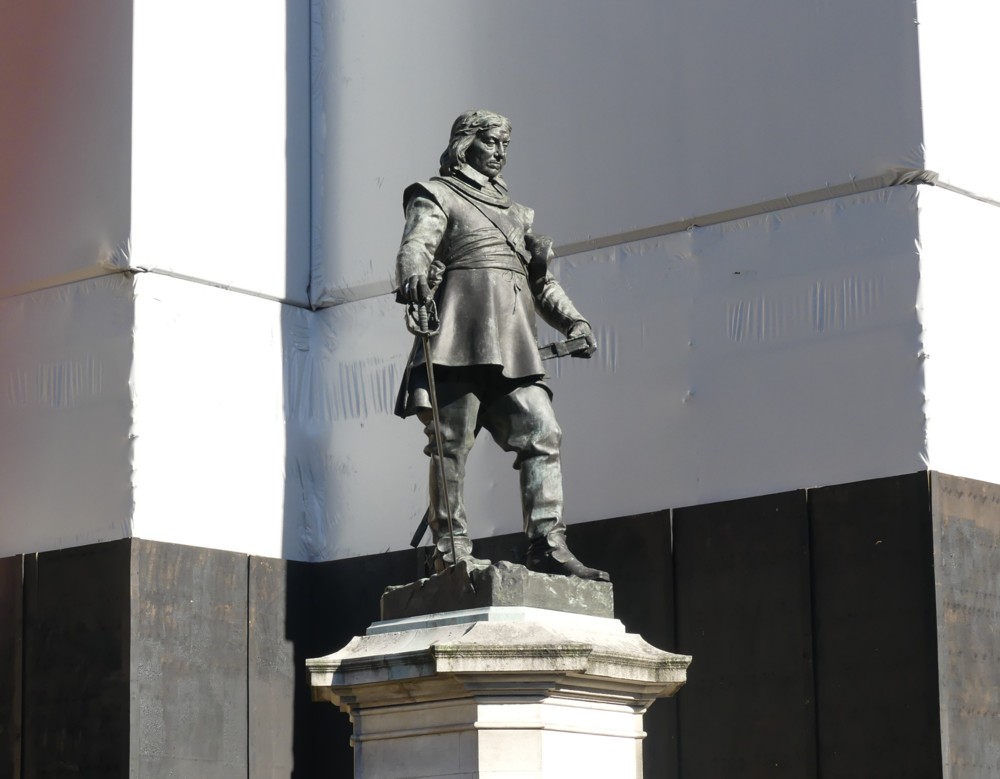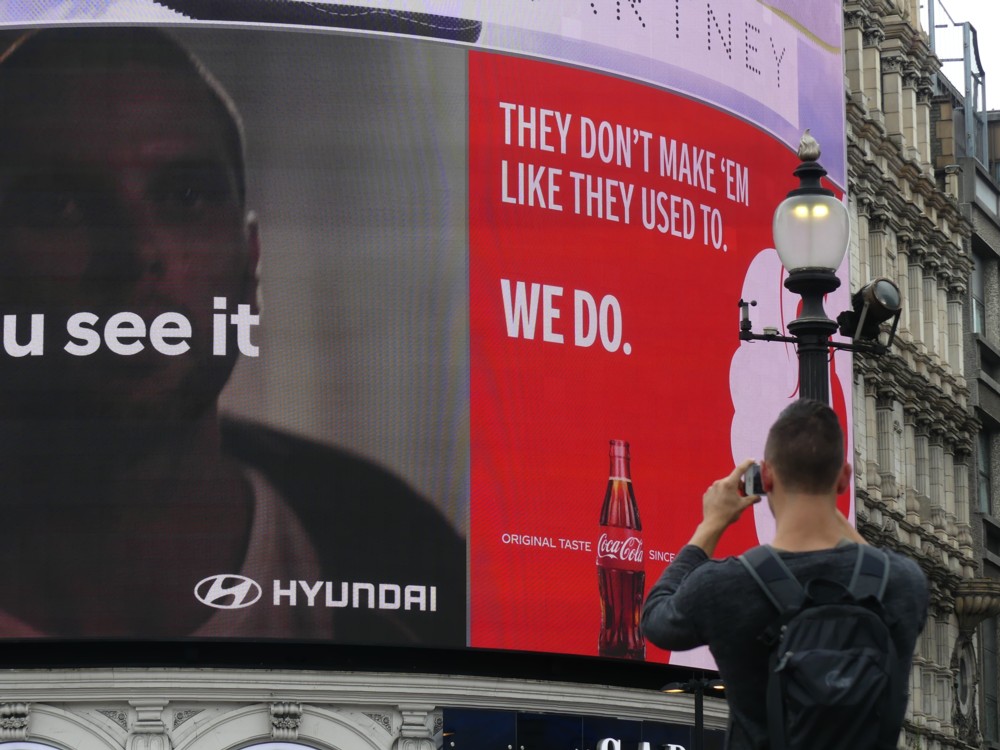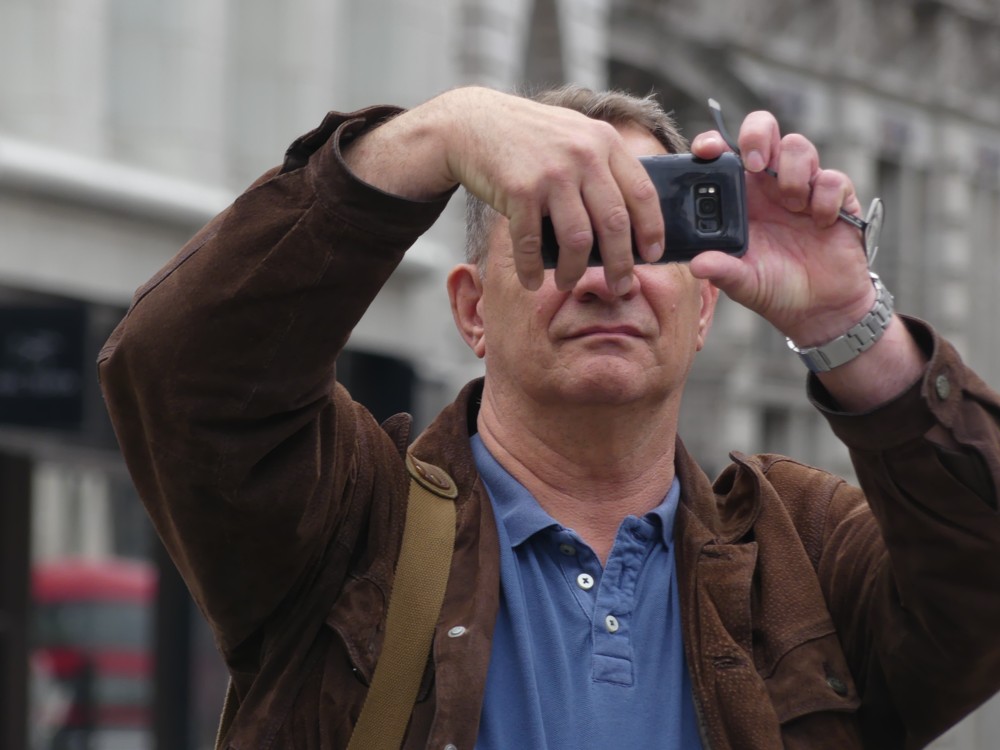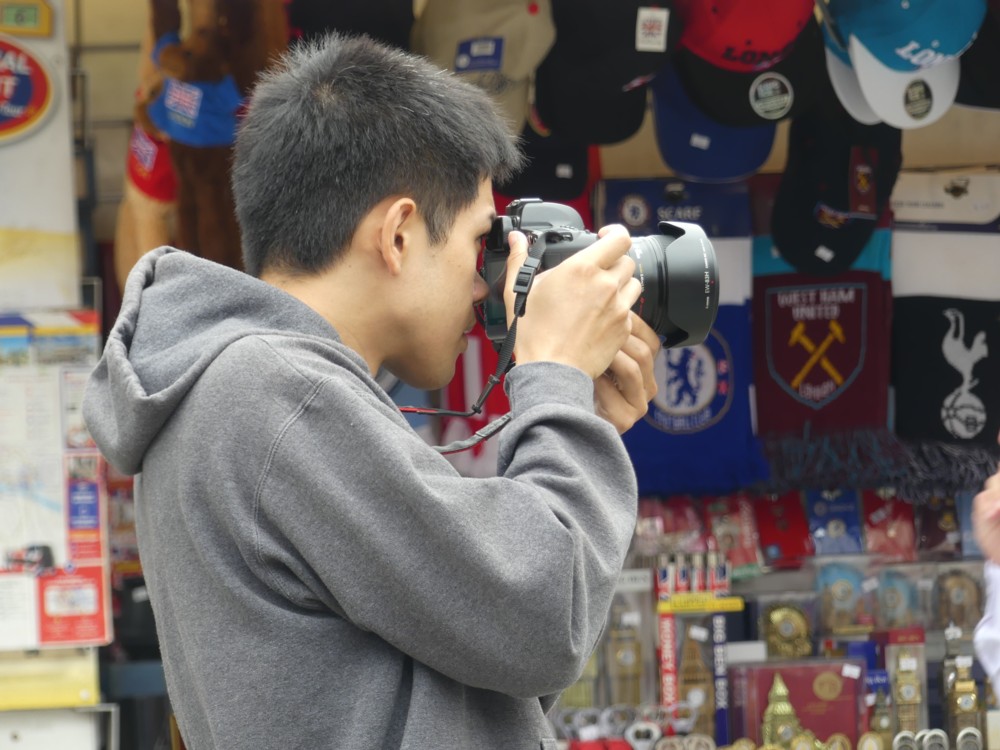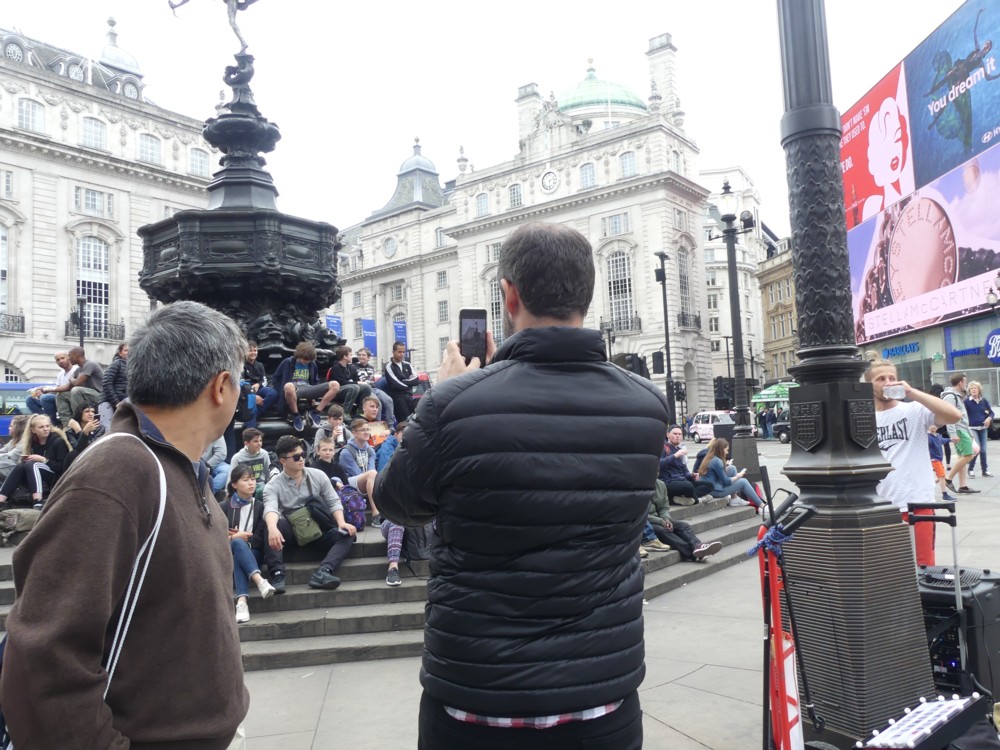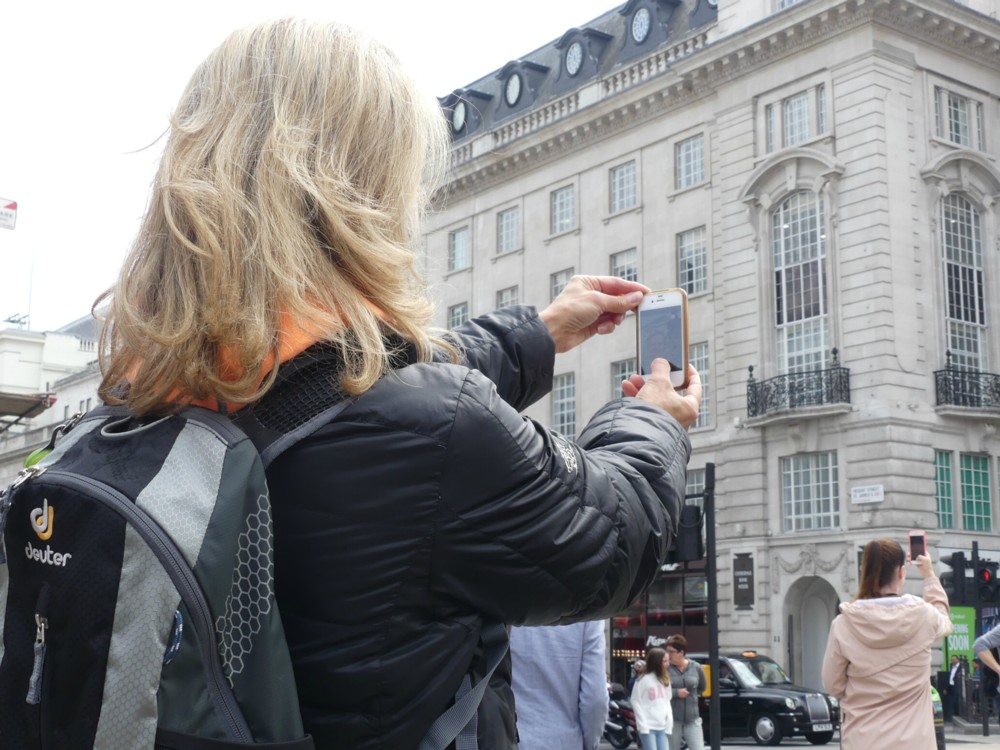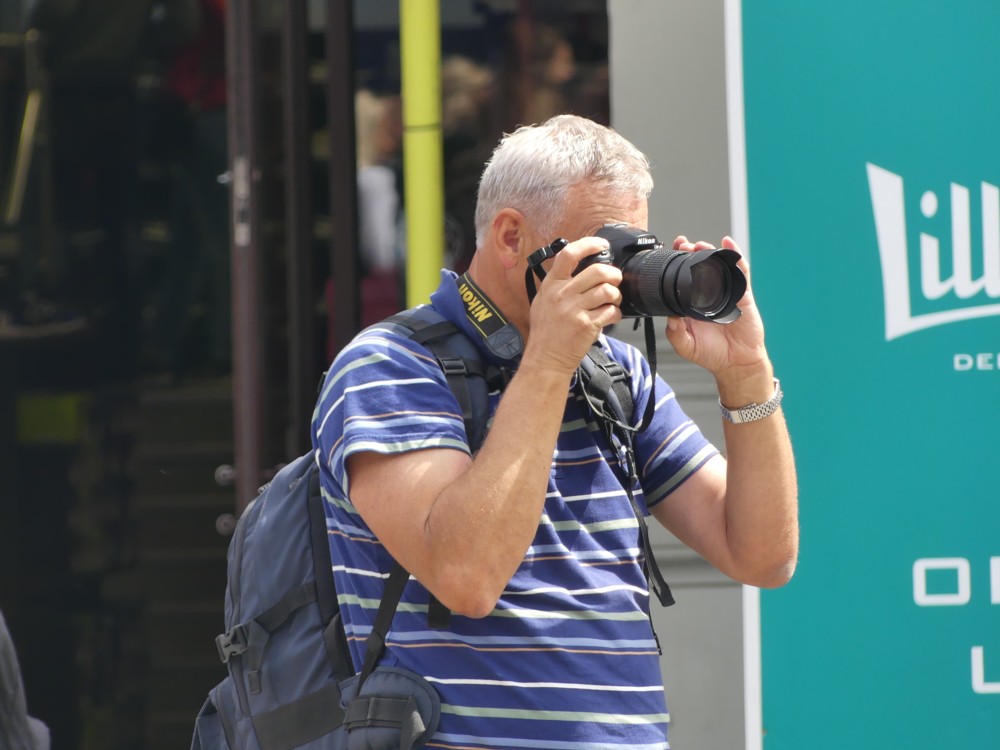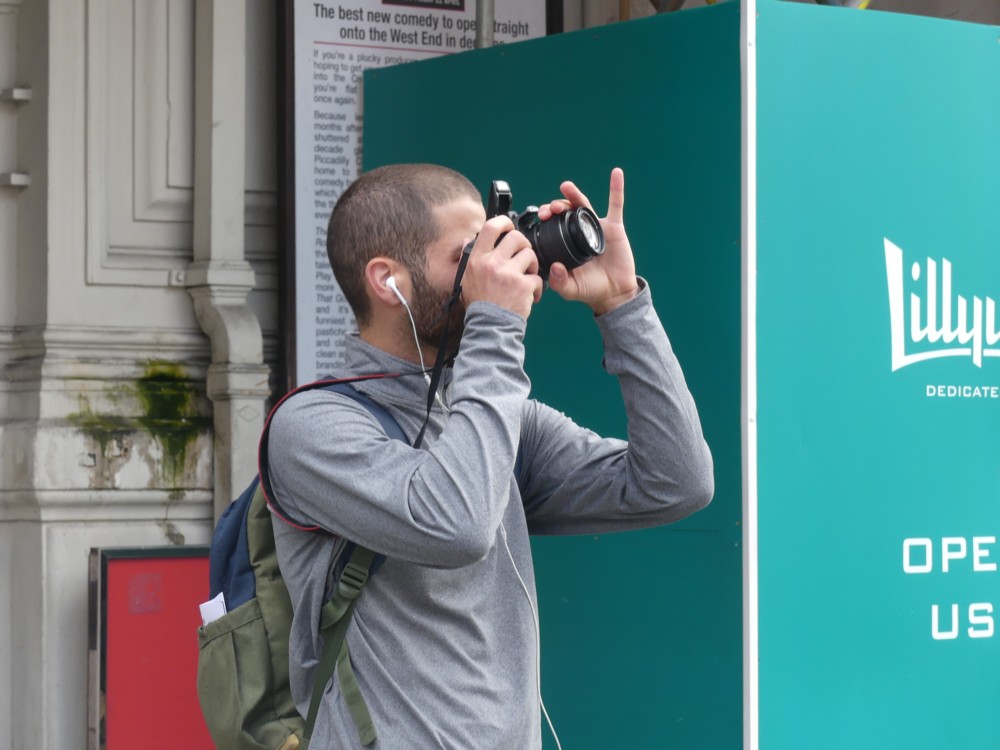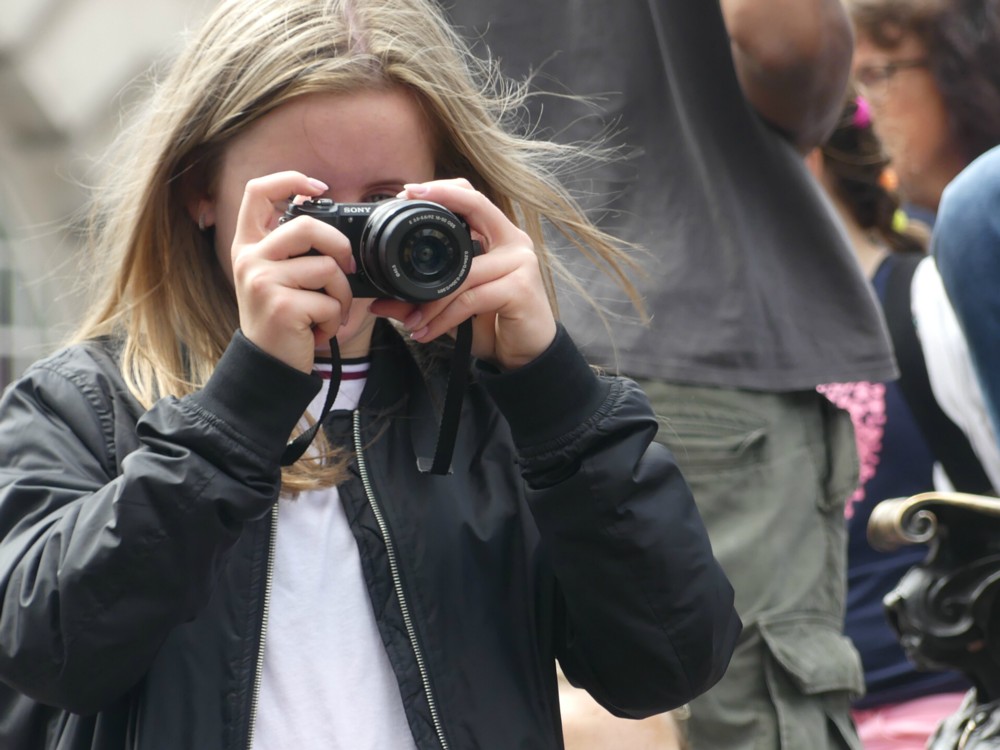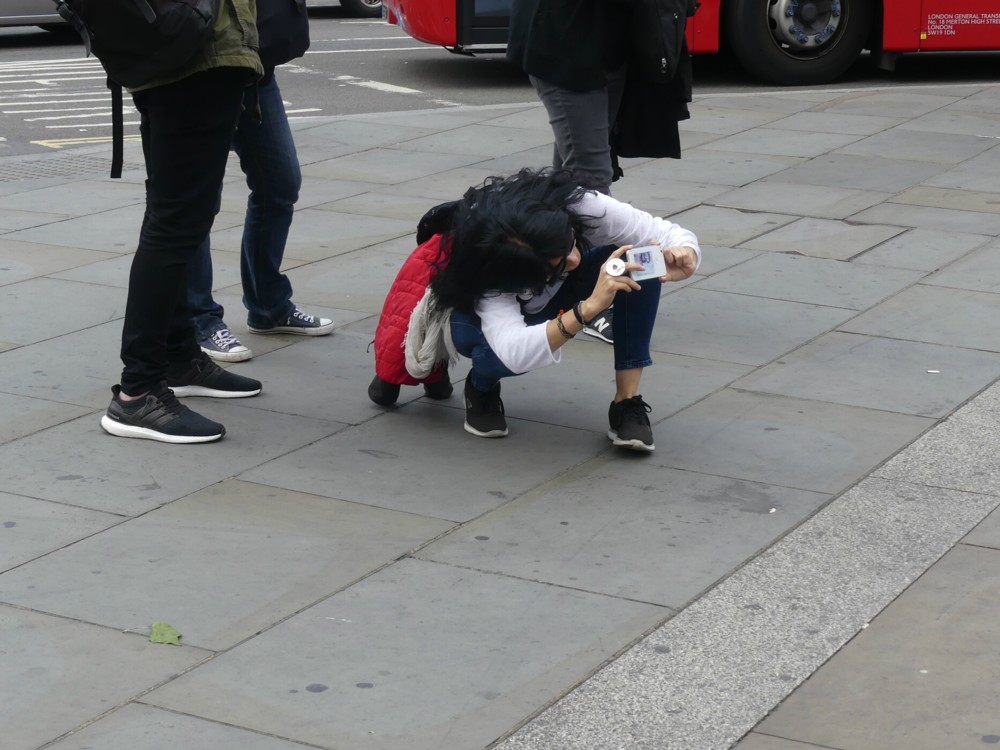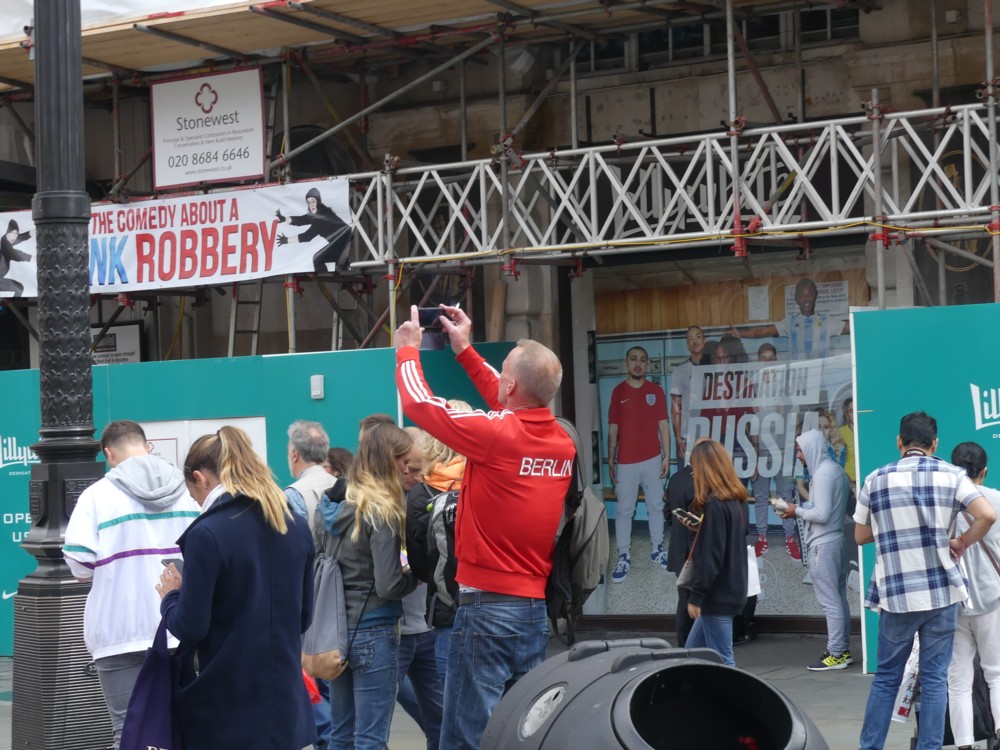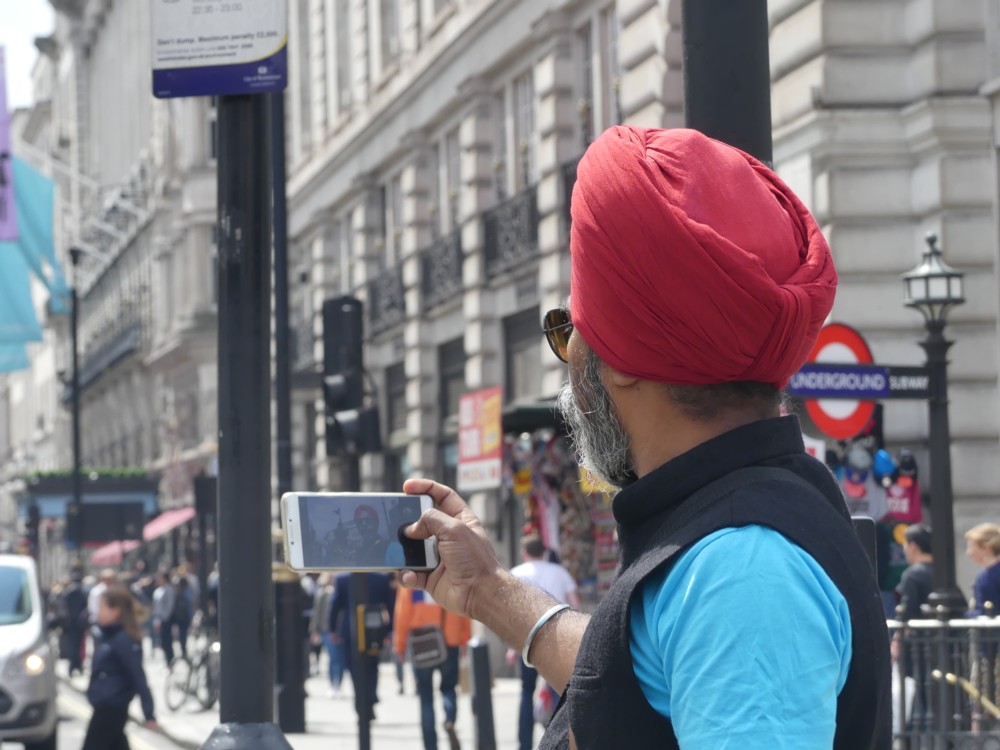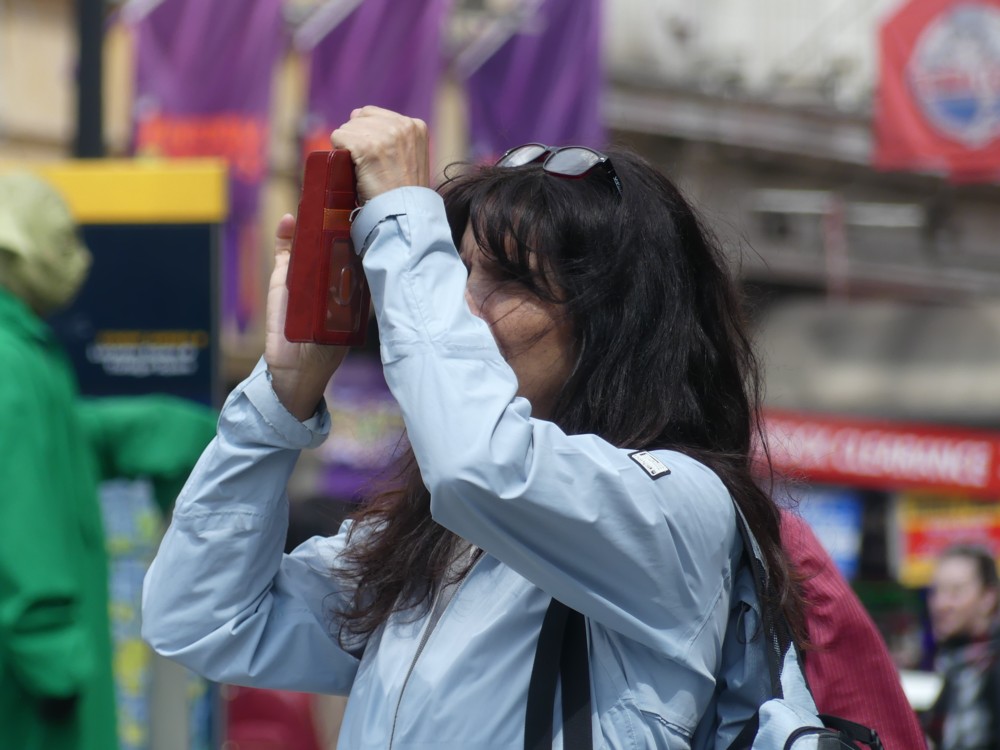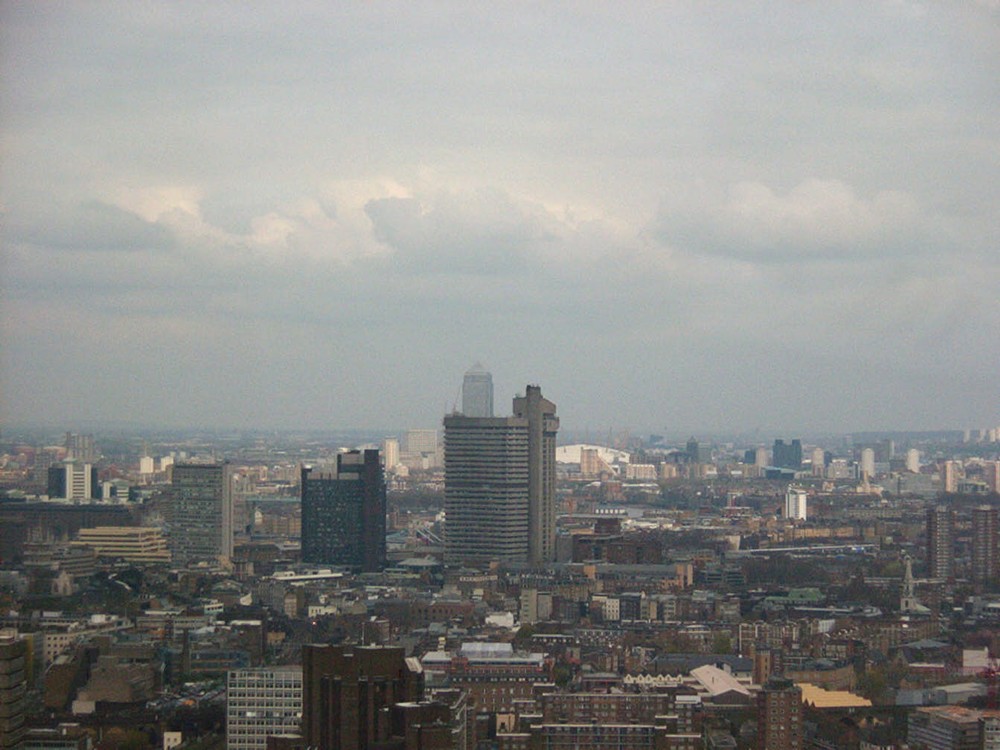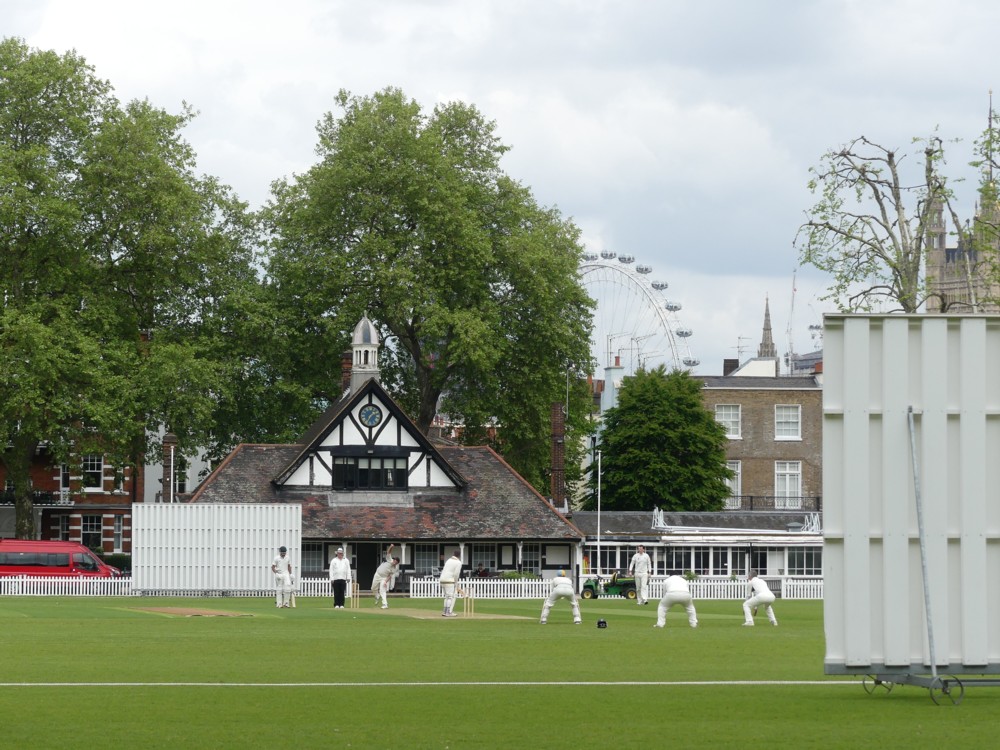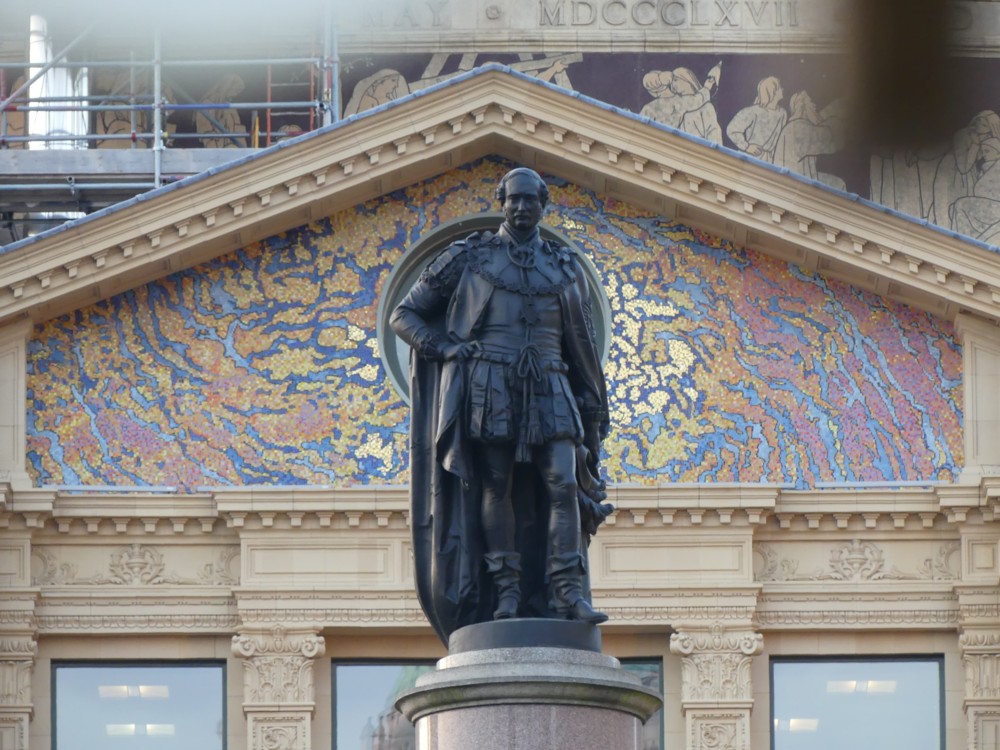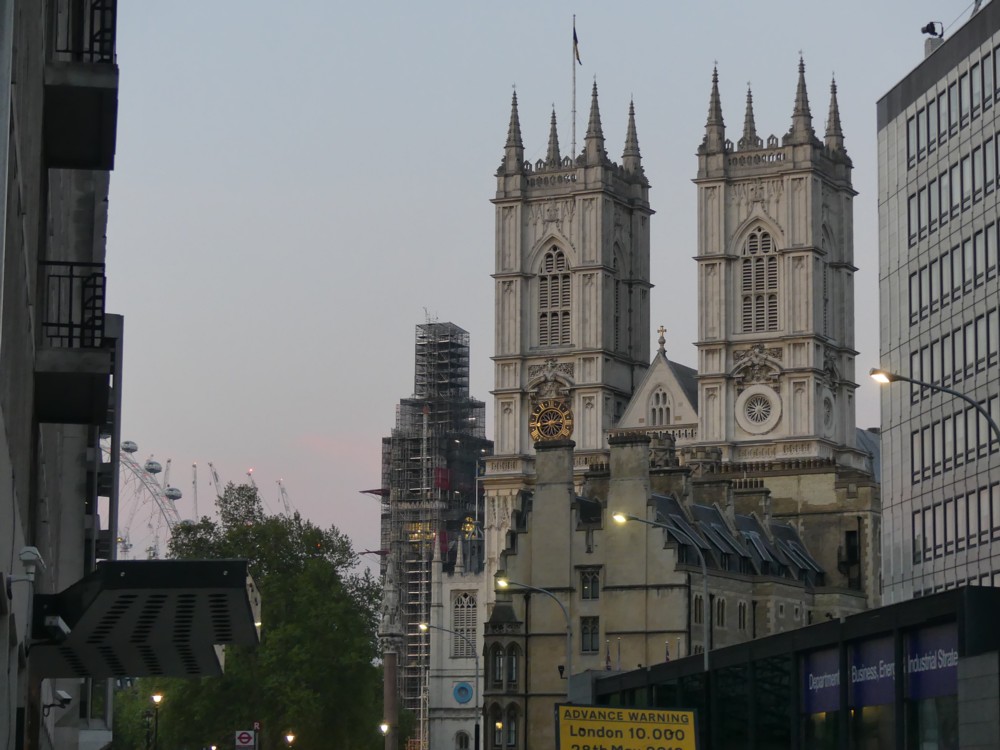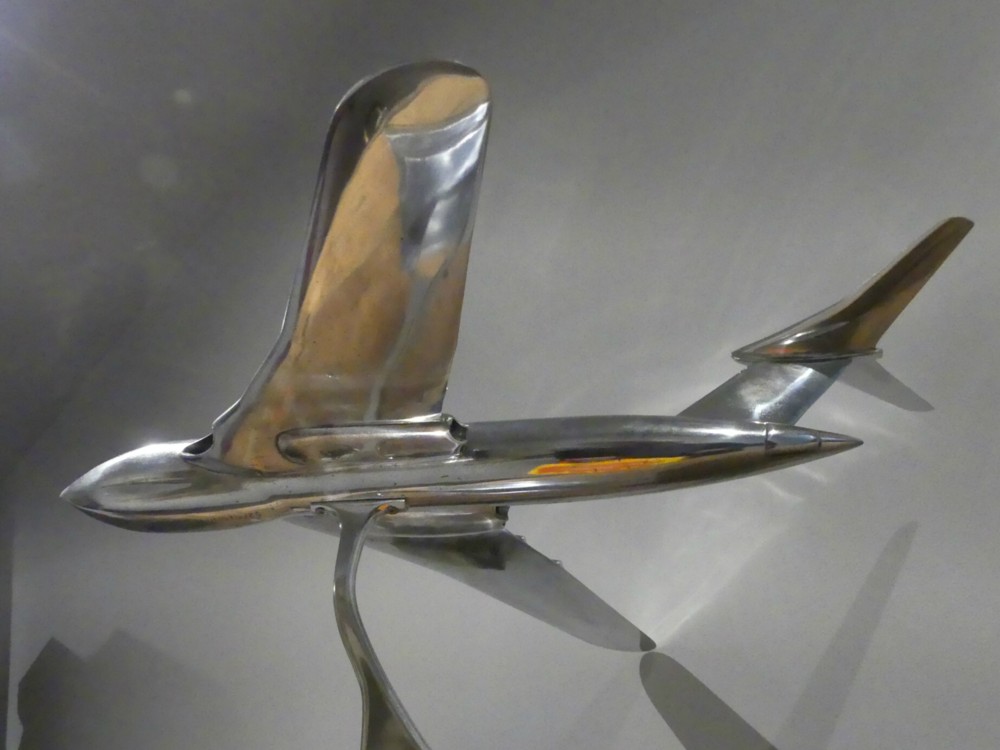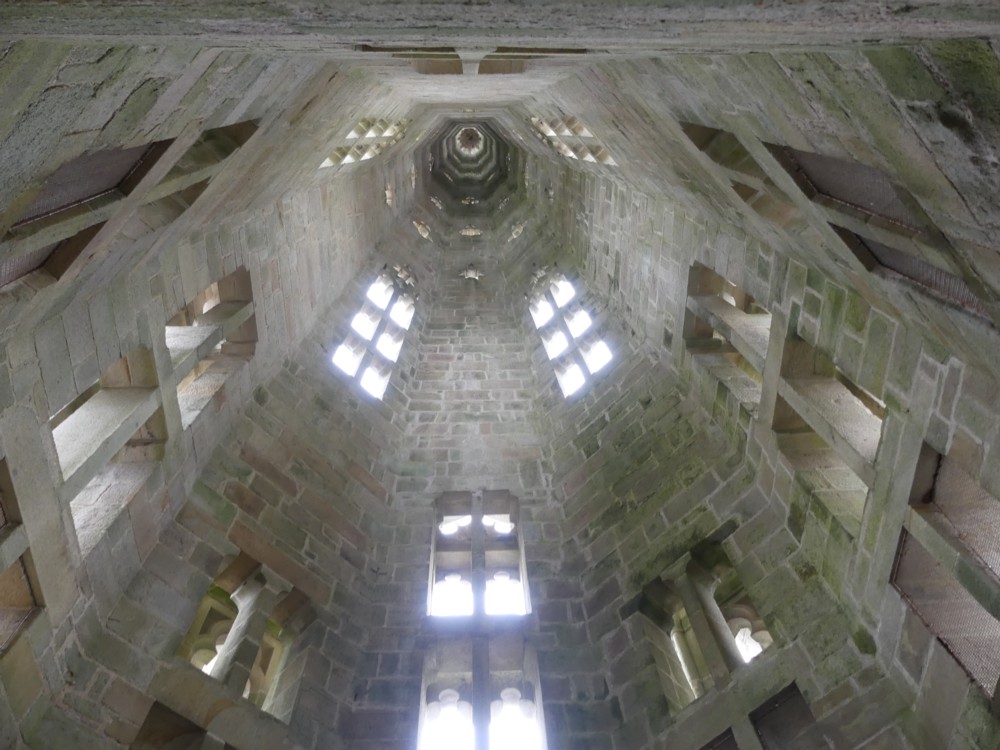Yes, in Piccadilly Circus, photoed at the same time as those hair-patting ladies. And this time, you know, just photoers, just photoing photos.
What strikes me is what a good camera I now have. The light was not good. I was there to meet up with someone, not to make the best of some sunny weather, because there was no sunny weather to be made the best of. In the bad old days, when their were two zeroes in the years, most of these photos would have been an unsightly blur. But now, the only thing I worry about is if there are recognisable faces on show:
Once again, I made the selection of what to show here entirely by me liking the photo and you not seeing recognisable faces. No thought was given to what sort of cameras were being used. Which means that what cameras were actually being used becomes interesting and informative, like a small scientific experiment.
Once again, we observe the rise and rise of the smartphone as the preferred way for regular people to photo. There are some Real Photographer cameras to be seen here. And I think there always will be, because there will always be photoers for whom the best possible photos are the thing they want, and the best that a big old clunky machine can do will always be better that what a smartphone can do.
But, thinking about that some more, is that right? Will there actually soon come a time when all photoing is done by little things the size of a biscuit?
And will there then be a Great Grumble from all the Real Photographers – a category which is maybe starting to include me – similar to the one when digital cameras first got going?

